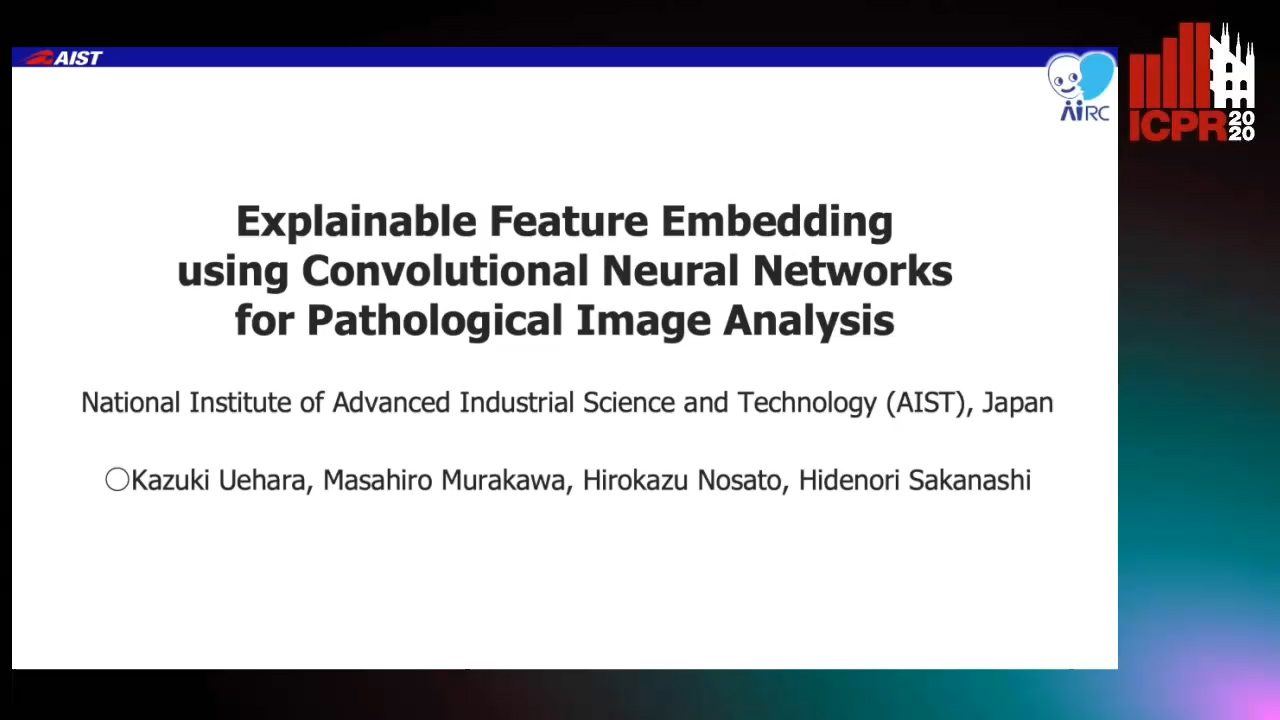Masahiro Murakawa
Paper download is intended for registered attendees only, and is
subjected to the IEEE Copyright Policy. Any other use is strongly forbidden.
Papers from this author
Explainable Feature Embedding Using Convolutional Neural Networks for Pathological Image Analysis
Kazuki Uehara, Masahiro Murakawa, Hirokazu Nosato, Hidenori Sakanashi

Auto-TLDR; Explainable Diagnosis Using Convolutional Neural Networks for Pathological Image Analysis
Abstract Slides Poster Similar
The development of computer-assisted diagnosis (CAD) algorithms for pathological image analysis constitutes an important research topic. Recently, convolutional neural networks (CNNs) have been used in several studies for the development of CAD algorithms. Such systems are required to be not only accurate but also explainable for their decisions, to ensure reliability. However, a limitation of using CNNs is that the basis of the decisions made by them are incomprehensible to humans. Thus, in this paper, we present an explainable diagnosis method, which comprises of two CNNs for different rolls. This method allows us to interpret the basis of the decisions made by CNN from two perspectives, namely statistics and visualization. For the statistical explanation, the method constructs a dictionary of representative pathological features. It performs diagnoses based on the occurrence and importance of learned features referred from its dictionary. To construct the dictionary, we introduce a vector quantization scheme for CNN. For the visual interpretation, the method provides images of learned features embedded in a high-dimensional feature space as an index of the dictionary by generating them using a conditional autoregressive model. The experimental results showed that the proposed network learned pathological features, which contributed to the diagnosis and yielded an area under the receiver operating curve (AUC) of approximately 0.93 for detecting atypical tissues in pathological images of the uterine cervix. Moreover, the proposed method demonstrated that it could provide visually interpretable images to show the rationales behind its decisions. Thus, the proposed method can serve as a valuable tool for pathological image analysis in terms of both its accuracy and explainability.